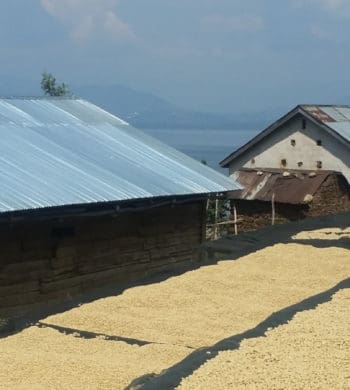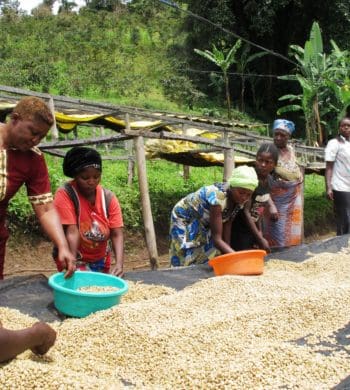Coffee production has been, like every facet of life in the DRC, subject to the forces of decades of civil conflict. Lacking both infrastructure (roads, vehicles, clean water, reliable electricity) and security for private investments, most production has reverted from larger-scale, capital-intensive plantations–which were prevalent during the colonial period–to small-holder farms of 100 trees or fewer. These smallholder farmers have sustained the industry along the eastern edge of the country, which has all the resources necessary to produce great coffee: high elevation, good rainfall, and an excellent varietal.
Largely because of punative export taxes on agricultural exports, until recently a significant amount of Congolese coffee made its way over the porous borders to neighboring Uganda and Rwanda, where it was re-bagged and sold without the Congo name.
Recent interest from the International Aid Community and the Specialty Coffee Industry has sparked a renaissance in coffee production in the DRC. Investments in washing stations and farmer training have grown exponentially in the past few years, and although there are still challenges with efficiency of export operations, growers have had some success producing high end specialty coffees that can compete well with the best offerings from Rwanda, Uganda and Kenya.
The best coffees from the Congo feature heavy body, deep berry tones, hints of mandarin orange and stone fruit, and subtle hints of Christmas spice.

